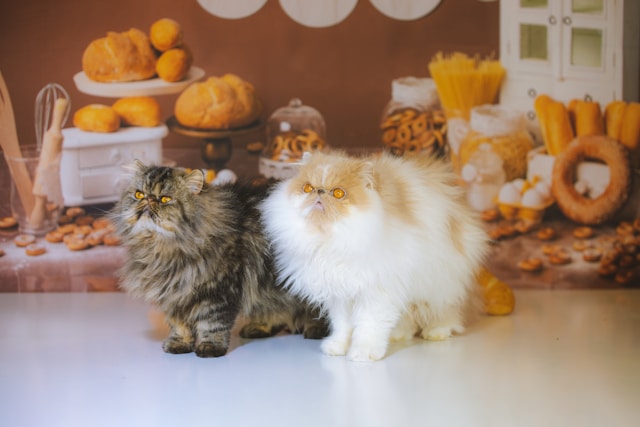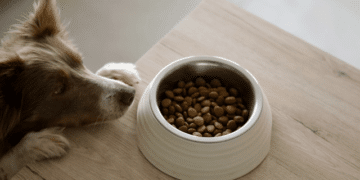As pet owners, we love sharing our lives—and sometimes our food—with our furry companions. However, many human foods can be harmful or even deadly to pets. Whether you have a dog, cat, or small animal, understanding which foods are dangerous is essential to keeping them safe and healthy.
In this guide, we’ll explore common toxic foods for pets, the symptoms of food poisoning, and what to do if your pet accidentally eats something harmful.
Why Some Human Foods Are Dangerous for Pets
Pets have different digestive systems and metabolisms than humans. While certain foods are safe for us, they can be toxic to animals. Some ingredients cause immediate reactions, while others lead to long-term health problems.
For example, chocolate contains theobromine, which dogs and cats cannot metabolize efficiently. Grapes and raisins, even in small amounts, can lead to kidney failure in dogs. Understanding these dangers can help prevent accidental poisoning and costly emergency vet visits.
Common Toxic Foods for Pets
1. Chocolate and Caffeine
Chocolate is one of the most well-known toxic foods for pets. It contains theobromine and caffeine, both of which can be deadly to dogs and cats. The darker the chocolate, the higher the toxicity. Symptoms of chocolate poisoning include vomiting, diarrhea, rapid heart rate, and seizures.
Caffeinated drinks like coffee, tea, and energy drinks should also be kept away from pets, as caffeine can cause restlessness, abnormal heart rhythms, and muscle tremors.
2. Grapes and Raisins
Even a small number of grapes or raisins can cause sudden kidney failure in dogs. The exact toxic compound is unknown, but symptoms include vomiting, lethargy, and loss of appetite. If your dog eats grapes or raisins, seek veterinary attention immediately.
3. Onions, Garlic, and Chives
Onions and garlic, whether raw, cooked, or powdered, are highly toxic to pets. These foods can destroy red blood cells, leading to anemia. Cats are especially sensitive, but dogs can also suffer poisoning. Symptoms include weakness, pale gums, and lethargy.
4. Xylitol (Artificial Sweetener)
Xylitol is a common sugar substitute found in sugar-free gum, candies, peanut butter, and baked goods. In dogs, it triggers a dangerous insulin release, causing a rapid drop in blood sugar. This can lead to weakness, vomiting, seizures, and even liver failure.
5. Alcohol and Caffeinated Drinks
Alcohol, even in small amounts, is highly toxic to pets. It can cause vomiting, disorientation, difficulty breathing, and even death. Be mindful of alcohol in mixed drinks, desserts, and even fermented foods that might contain traces of alcohol.
6. Dairy Products
Many pets, especially adult cats and dogs, are lactose intolerant. Dairy products like milk, cheese, and ice cream can cause digestive issues such as diarrhea and bloating. While a tiny amount might not be harmful, it’s best to avoid giving pets dairy regularly.
7. Fatty Foods and Cooked Bones
High-fat foods like bacon, fried foods, and fatty meats can lead to pancreatitis, a painful and life-threatening condition in pets. Cooked bones, especially chicken and pork bones, can splinter and cause choking or internal injuries. Always provide pets with pet-safe chews instead.
8. Macadamia Nuts
Macadamia nuts are toxic to dogs, causing weakness, tremors, vomiting, and an increased body temperature. Symptoms usually appear within 12 hours of ingestion and can last up to two days. Even small amounts can be harmful.
9. Avocado
Avocado contains a toxin called persin, which is dangerous to birds, rabbits, and some other small animals. While dogs and cats are less affected, avocado pits pose a choking hazard, and the high-fat content can cause digestive issues.
10. Raw Dough (Yeast Dough)
If a pet eats raw bread dough containing yeast, the dough can expand in their stomach, leading to dangerous bloating. Fermentation also produces alcohol, which can cause alcohol poisoning. Always keep raw dough out of reach of curious pets.
Special Considerations for Different Pets
Not all animals react the same way to certain foods. What is toxic to dogs may not be harmful to cats or birds. Here are a few special considerations:
-
Dogs: More prone to eating toxic foods, especially chocolate, grapes, and xylitol.
-
Cats: Highly sensitive to onions, garlic, and caffeine. They also lack an enzyme needed to break down certain compounds.
-
Birds: Chocolate, avocado, and caffeine are especially dangerous for birds. Even small amounts can be fatal.
-
Rabbits and Small Animals: High-fat foods, onions, and dairy can cause severe digestive issues. Always stick to pet-approved fruits and vegetables.
Signs of Food Poisoning in Pets
If your pet has eaten something toxic, symptoms may appear within minutes or take several hours to develop. Common signs of poisoning include:
-
Vomiting and diarrhea
-
Drooling or excessive thirst
-
Loss of appetite
-
Lethargy or weakness
-
Rapid breathing or abnormal heart rate
-
Tremors or seizures
If you notice any of these symptoms, contact your veterinarian or a pet poison control hotline immediately.
What to Do If Your Pet Eats Something Toxic
If you suspect your pet has consumed a dangerous food, follow these steps:
-
Remove the food – Prevent your pet from eating more.
-
Check for symptoms – Monitor their behavior and condition.
-
Contact your vet – Provide details on what and how much they ate.
-
Do NOT induce vomiting unless advised by a vet, as this can sometimes make things worse.
-
Seek emergency care if symptoms are severe.
Safe Alternatives & Pet-Friendly Treats
Instead of risky human foods, offer your pet safe, healthy alternatives:
-
For dogs and cats: Carrots, apples (without seeds), blueberries, and plain cooked chicken.
-
For birds: Chopped fruits and vegetables like apples, bananas, and leafy greens.
-
For rabbits and guinea pigs: Bell peppers, cucumbers, and fresh herbs.
When in doubt, choose pet-specific treats designed for their nutritional needs.
Final Thoughts
Keeping your pet safe starts with knowing which foods are dangerous. While it’s tempting to share snacks, some human foods can lead to serious health issues in pets. By being aware of these risks and providing safe alternatives, you can help your furry friend live a long, healthy life.









